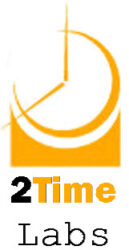I had the good fortune to attend a training course conducted by Tom deMarco and Tim Lister. (I may be swapping an “i” for an “o” in their names, and my apologies go to them if I am.)
Tom and Tim were experts in software productivity back in the early 1990s, and their research revealed a stunning finding: software productivity was most strongly correlated with the space of one’s office.
Not experience. Not programming language. Not age. Not education.
Space. As measured by square feet (or metres). The more space programmers had, the better they performed.
The reason was profoundly simple. Continue reading “More Space = Better Code”


 One of the side-benefits that I am realizing from the 2Time system is its value as a coaching tool.
One of the side-benefits that I am realizing from the 2Time system is its value as a coaching tool.


